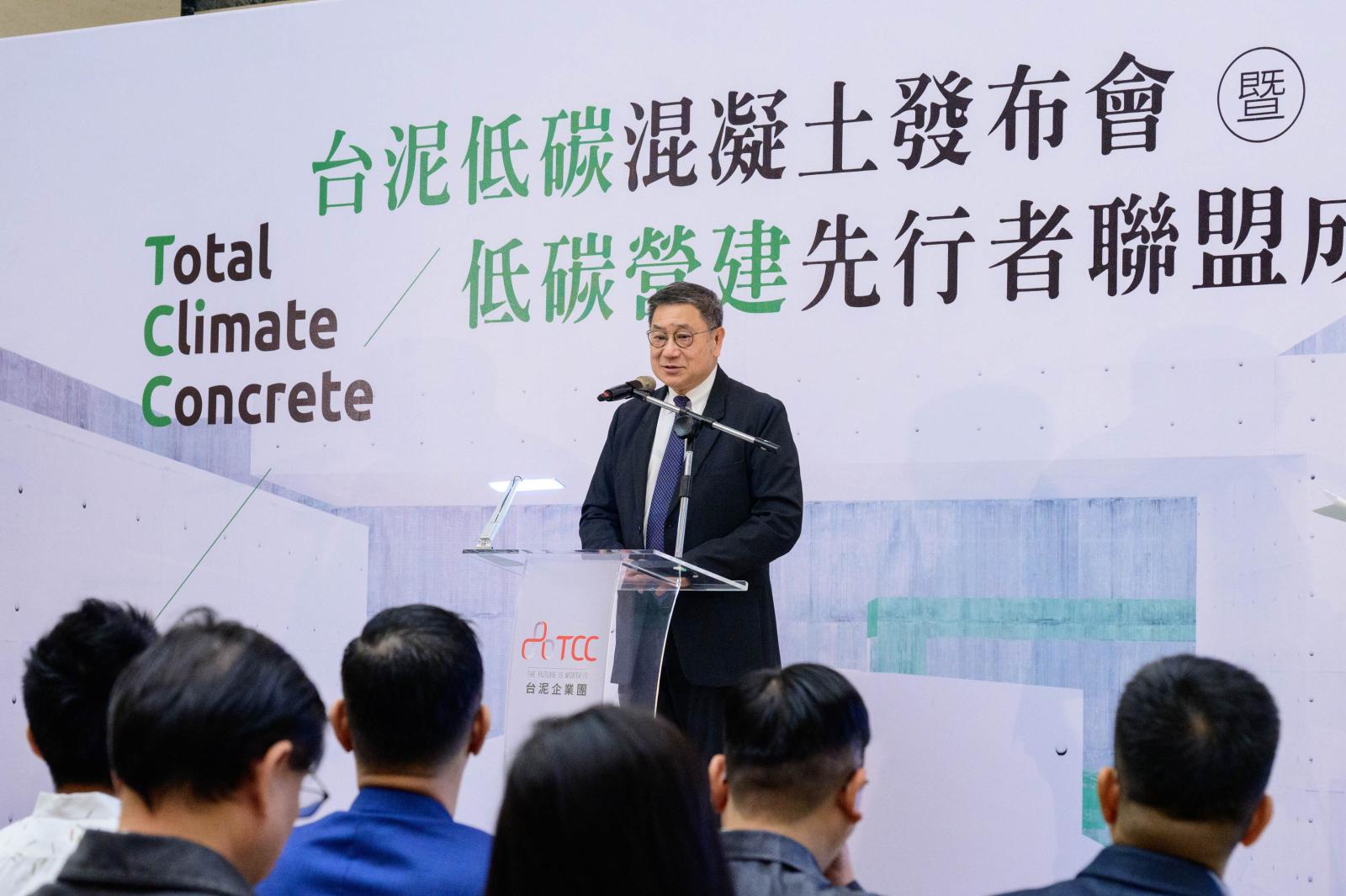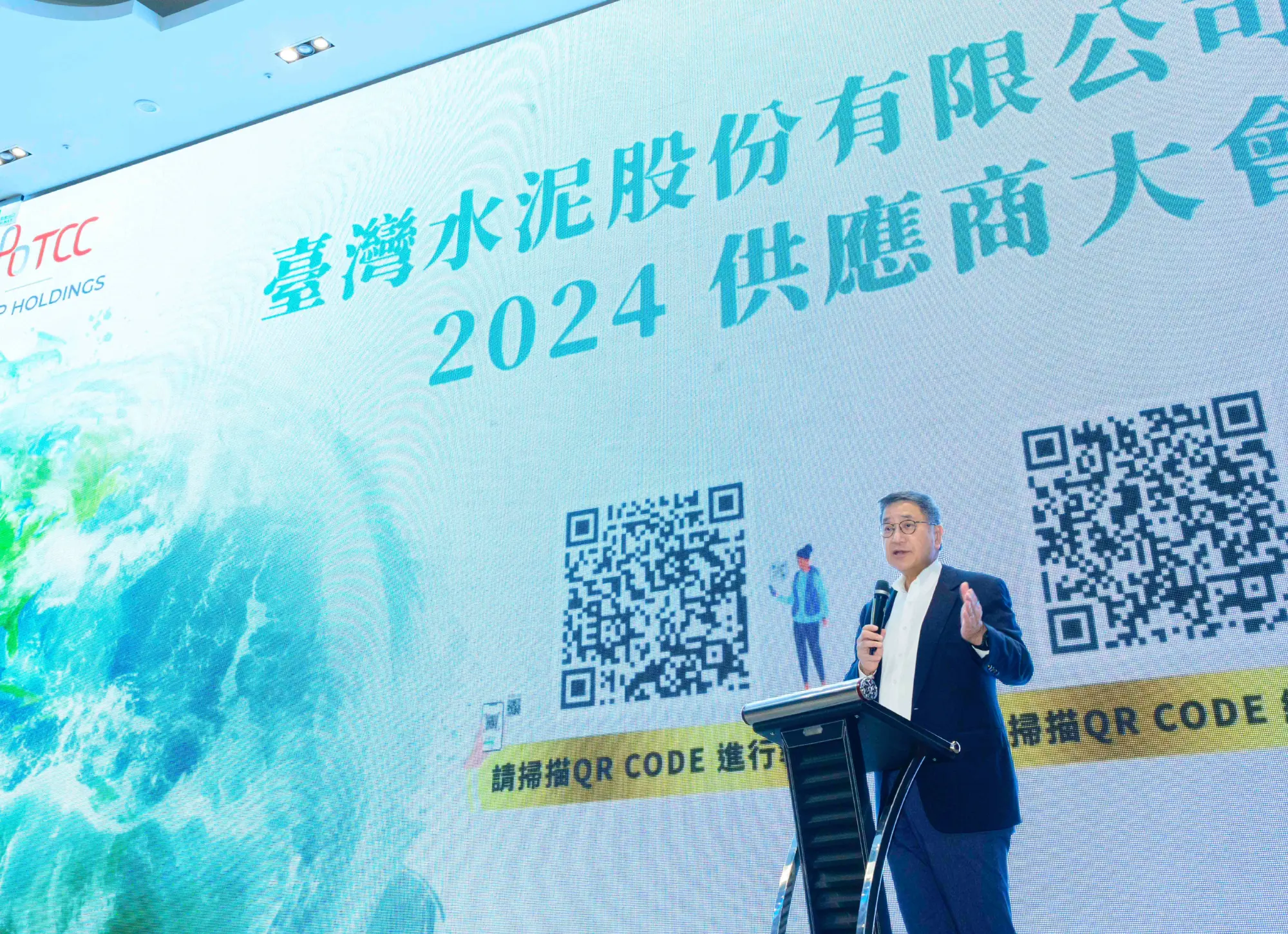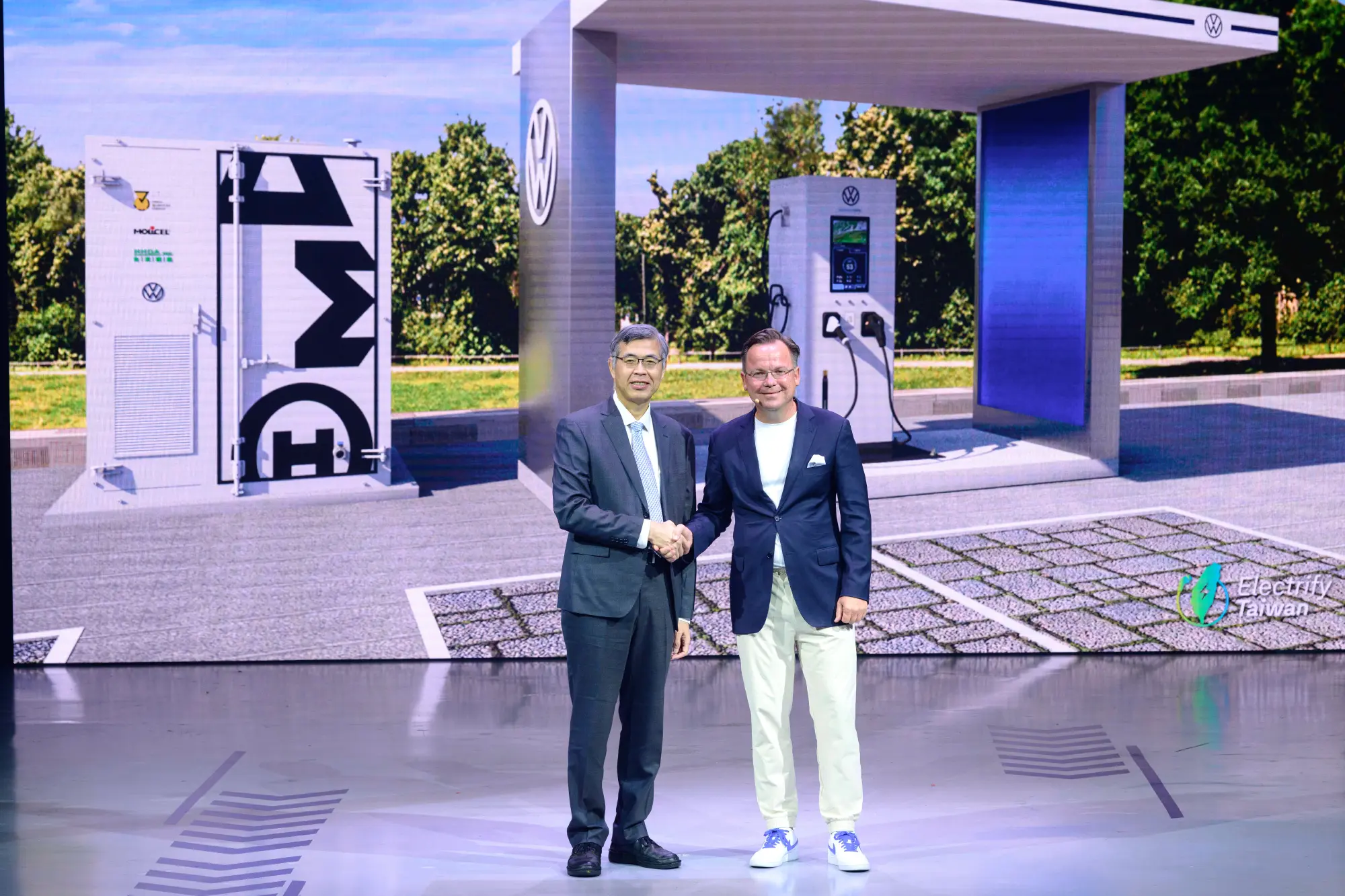TCC Aligns with GCCA Low-Carbon Definitions, Launches Taiwan's Lowest Carbon Limestone Concrete Annual Sales Exceed 800,000 Cubic Meters, Reduces Carbon Emissions by 146,000 Tons
TCC Aligns with GCCA Low-Carbon Definitions, Launches Taiwan's Lowest Carbon Limestone Concrete Annual Sales Exceed 800,000 Cubic Meters, Reduces Carbon Emissions by 146,000 Tons
2024.11.18
-
Copied

TCC Group Holdings announced to aligned with The Global Cement and Concrete Association (GCCA)’s the definition of low-carbon concrete, which was released at the COP29 United Nations Climate Summit on the 18th. TCC launched the lowest carbon limestone cement concrete in Taiwan, achieving a carbon reduction rate significantly lower than the government-announced low-carbon assessment manual's standard for general concrete, with a reduction rate of up to 53%. TCC (18th) invited representatives from over a hundred construction companies that have used low-carbon limestone cement and limestone cement concrete in the past year to jointly declare the formation of the "Low-Carbon Construction Pioneers Alliance.
Over the past year, TCC and the clients have collectively reduced carbon emissions in the construction industry by 146,000 tons through the production and use of low-carbon building materials. This year alone, TCC sold over 800,000 cubic meters of limestone cement concrete, with signed orders exceeding 2.5 million cubic meters. The United Nations' 2024 Emissions Gap Report suggests that using limestone and other materials as alternative clinker in low-carbon cement could help the world reduce carbon emissions by 400 million tons of CO2e by 2035, highlighting it as a cost-effective and highly impactful carbon reduction solution.
TCC’s Chairman Nelson An-ping Chang said: “At the beginning of 2024, Africa was ravaged by drought, and Saudi Arabia experienced unprecedented flooding. The impacts of climate change affect not only the parched lands of farmers but also the air children breathe and humanity's aspirations for the future. He pointed out that many companies with high carbon emissions achieve carbon reduction by selling off assets, but TCC believes this is not the answer. Cement is a necessity, and it is essential to ensure that necessities can continue to be used sustainably. Therefore, TCC continues to reduce carbon emissions to meet future global demands, emphasizing that ‘everything we do is for the future. He also noted that TCC's products produced worldwide, including in Portugal, Turkey, and Mainland China, are the lowest in carbon emissions without compromising quality. However, the carbon emissions of the limestone cement concrete (IL15) launched in Taiwan are not the lowest, not due to a lack of technology, but because of numerous regulatory constraints.”
Huang Yifang, General Manager of Kedge Construction, the company that used the most TCC limestone cement concrete in the past year, noted that tech giant ASML also used TCC limestone cement concrete. HI-YES Group has used TCC limestone cement concrete in over ten projects across Taiwan. The President of HI-YES Group Wang Jack emphasized that low-carbon is the path that must be taken, and consumers recognize TCC as a guarantee of quality. Lin Hsien-Te, an honorary professor at the Department of Architecture at National Cheng Kung University, known as the father of green buildings in Taiwan, stressed that promoting low-carbon building materials is crucial for the government to achieve net-zero emissions by 2050.

In October 2023, TCC released the Total Climate series of low-carbon products, including TCC Portland-limestone cement, with a carbon reduction rate of 15.4%. With further advancements in R&D, the new generation of TCC Portland-limestone cement announced today has achieved a carbon reduction rate of 23.83%, an additional 8.43% reduction from last year, making it the lowest carbon cement in Taiwan. According to the international low-carbon concrete guidelines released by GCCA, low-carbon concrete must reduce carbon emissions by at least 15% compared to traditional concrete. As a GCCA member, TCC has proactively aligned with international standards and launched the lowest carbon Portland-limestone concrete in Taiwan. Based on various public data comparisons, TCC's Portland-limestone cement concrete, whether in 4000, 5000, or 6000 psi specifications, has carbon footprints of 186.52 kgCO2/m3, 218.69 kgCO2/m3, and 231.89 kgCO2/m3, respectively, making it the lowest carbon product in the industry in Taiwan. Even for Portland Type I concrete, regardless of the 4000, 5000, or 6000 psi specifications, with carbon footprints of 201 kgCO2/m3, 237 kgCO2/m3, and 251 kgCO2/m3, TCC's unique Portland Type I remains the lowest carbon in Taiwan, 8%-16% lower than industry peers.
The United Nations' 2050 Global Building Net-Zero Pathway clearly stipulates that by 2030, the embodied carbon in new buildings globally must be reduced by over 40%. The Ministry of the Interior of Taiwan has introduced a low-carbon building label focusing on embodied carbon in building materials, and the Taipei City Government requires new buildings in environmental impact assessment development projects to obtain low-carbon building labels for the manufacturing, transportation, and construction processes of building materials. New Taipei City mandates that urban renewal projects with a unit area of over 2000 square meters must obtain the third-level low-carbon building label issued by the Ministry of the Interior.
The trend of using low-carbon building materials is unstoppable globally. All 50 state transportation departments in the United States have approved the use of Portland Limestone Cement and other low-carbon cements in transportation construction, increasing the market share of low-carbon cement in the U.S. from 2% in 2018 to approximately 35% in 2023. The United Nations' 2024 Emissions Gap Report further suggests that using limestone and other materials as alternative clinker in low-carbon cement could help the world reduce carbon emissions by 400 million tons of CO2e by 2035, highlighting it as a cost-effective and highly impactful carbon reduction solution. The report also recommends that indicators such as the proportion of alternative binders and cement emission intensity be considered for inclusion in Nationally Determined Contributions (NDCs). In addition to actively developing and launching lower-carbon products, TCC once again calls on the government to ensure fair competition by requiring both imported and domestic products to disclose their carbon footprints and bear carbon costs, thereby protecting companies that are making significant efforts to reduce carbon emissions.
More Related Information
-
 2024.10.22TCC Group Holdings Launches Green Value Chain Alliance, Commits to 10% Carbon Emission Reduction by 2030, and Invests in Little Tern Conservation in Response to COP16
2024.10.22TCC Group Holdings Launches Green Value Chain Alliance, Commits to 10% Carbon Emission Reduction by 2030, and Invests in Little Tern Conservation in Response to COP16 -
2024.10.04A Global Call to Action: Investing in Europe's Green Leadership, Our Shared Responsibility
-
 2024.09.19NHOA TCC Partners with Volkswagen Taiwan to Announce Charging-Storage Collaboration Driving Sustainable Carbon Reduction
2024.09.19NHOA TCC Partners with Volkswagen Taiwan to Announce Charging-Storage Collaboration Driving Sustainable Carbon Reduction


